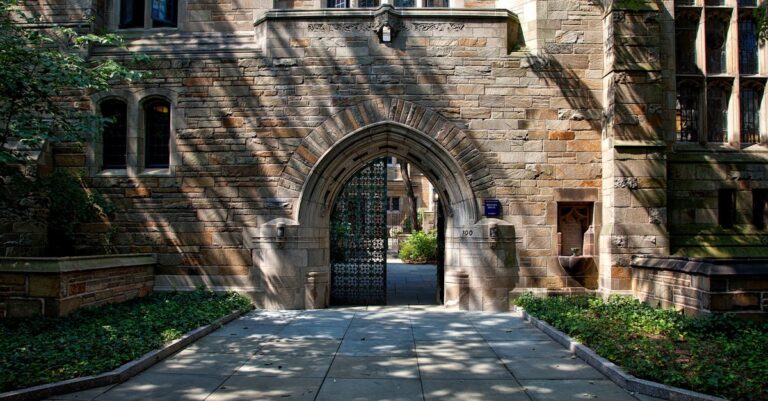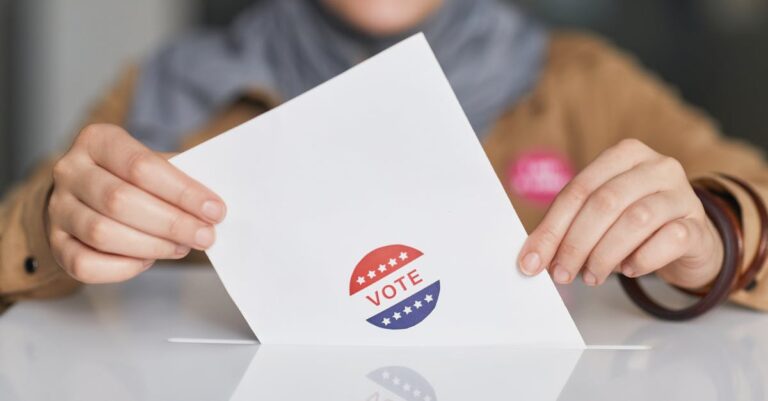
Public school funding plays a crucial role in shaping the educational landscape for students across the nation. However, recent revelations have shed light on a disheartening reality: the inequities and controversies surrounding dress code policies in public schools are indicative of larger disparities fueled by funding discrepancies. This article delves into the alarming statistics and implications of these shortcomings, revealing the urgent need for reform in how public schools allocate resources and enforce dress codes.
The Impact of Dress Code Policies:
Dress codes in public schools have long been a topic of contention, with proponents arguing they promote a conducive learning environment and instill a sense of discipline. However, the enforcement of these policies has raised troubling questions about equity and fairness. Studies have shown that students from lower-income families are disproportionately affected by strict dress code regulations, as they may struggle to afford the required clothing or face disciplinary action for violations.
Statistics Reveal Disparities:
A closer look at the statistics unveils the stark disparities in public school funding that contribute to the dress code dilemma. According to recent data, schools in lower-income areas receive significantly less funding than their wealthier counterparts, leading to inadequate resources for essential educational needs, let alone provisions for clothing assistance programs. This funding gap perpetuates a cycle of inequality, as students from underprivileged backgrounds are left at a disadvantage when it comes to adhering to dress code standards.
The Social Implications:
Beyond the financial implications, the enforcement of dress codes in public schools can have profound social consequences. Students who are penalized for dress code violations may experience feelings of shame, embarrassment, or stigmatization, potentially impacting their self-esteem and academic performance. Moreover, these punitive measures can contribute to a culture of conformity that stifles individual expression and creativity, hindering students’ ability to thrive in a diverse and inclusive learning environment.
The Call for Reform:
As the disparities in public school funding and dress code enforcement continue to underscore systemic inequities, there is an urgent need for reform. Advocates are pushing for policies that promote inclusivity, cultural sensitivity, and accessibility, ensuring that all students have equal opportunities to succeed regardless of their socioeconomic background. By addressing the root causes of funding disparities and reevaluating dress code policies through a lens of social justice, public schools can level the playing field and create a more equitable educational system for all.
Conclusion:
The intersection of public school funding, dress code policies, and systemic disparities paints a troubling picture of the challenges facing students in today’s educational landscape. By acknowledging the shortcomings and injustices embedded in these issues, we can work towards comprehensive reform that prioritizes equity, diversity, and inclusion in our public schools. It is imperative that stakeholders, policymakers, and communities come together to address these pressing concerns and pave the way for a more just and equitable future for all students.








OMG, can we just talk about how messed up it is that public schools have all these funding issues but are still out here policing what students wear? Like, priorities, people! Kids shouldn’t be getting in trouble ’cause they can’t afford the fancy clothes the school wants them to wear. And don’t even get me started on how this whole dress code thing affects students’ self-esteem and academic performance. It’s just not fair, man.
Ugh, like seriously, dress codes in public schools? Don’t they have better things to worry about like, I don’t know, actually educating students! It’s so dumb how they care more about what kids wear than making sure they have equal resources
Whoa, this article really opened my eyes to how public school funding affects dress code policies! It’s crazy to think that some students might get in trouble just because they can’t afford the right clothes. We definitely need some changes to make things more fair for everyone. Let’s hope for reform that promotes equality and inclusivity in schools! 📚👗✨
Wow, because nothing says “equal education for all” like arguing about whether a kid’s shirt is too distracting or not, right? Let’s just keep pouring funds into enforcing dress codes instead of, I dunno, maybe investing in the actual education of these kids
Public school funding is super duper important, like really really important ya know? Dress codes, man, they can be like a big issue especially for students who can’t afford the fancy clothes. It’s not fair that some students have to worry about getting in trouble for what they wear just because they don’t have as much money. And then there’s the whole thing about public schools in lower-income areas getting less money than the rich schools, like what’s up with that? It’s not cool, man. We gotta make sure all students have the same chances to succeed no matter where
Haha, so like, if public schools can’t even get their dress codes right, how are they supposed to prepare us for the real world, am I right? Like, imagine showing up to a job interview and getting penalized because your socks don’t match the company’s dress code. It’s all about priorities, people! Let’s focus on giving students a quality education and not just what they wear on the outside. #DressCodeDrama #SchoolPriorities
Publick skool funding is super important, like really super important. And them dress codes, man, they can be a big deal for some students. It’s not fair that some kids can’t afford the right clothes and then they get in trouble for it. That’s messed up. We gotta make sure all skools have the same amount of money so everyone gets a fair shot. And dress codes should be fair too, not making some kids feel bad ’cause they can’t afford fancy clothes. Let’s all work together to make things better for all students, no matter
Oh, great, because clearly the most pressing issue in our education system is whether little Timmy wore his uniform to school or not! Forget about the fact that schools in poorer areas are
Oh, wow, what a groundbreaking revelation – who would have thought that dress codes in public schools could be linked to funding issues? I’m sure all the students struggling to afford the required clothing are just thrilled to know that their lack of resources is all part of a larger systemic problem. Maybe next we’ll discover that water is wet and the sky is blue. So glad this article enlightened
Wow, this article really makes ya think about how public school funding affects dress codes, huh
Oh man, public school funding is like a huge puzzle piece in making sure students get a good education, you know? But then you got these dress code rules that can make things even more complicated for some kids. It’s like, not everyone can afford to keep up with all the dress code stuff, and that’s not fair. And did you know that schools in poorer areas
lol imagine getting in trouble for wearing the wrong hoodie to school! Like, sorry teach, didn’t mean to disrupt the educational vibe with my fashion choices. But for real, public school funding should be used for important stuff, not just policing outfits. Let the kids express themselves, man! #FreeTheHoodies
Wow, this article really opens your eyes to the unfairness in public schools! Dress codes shouldn’t be making students feel bad about themselves, they should be helping everyone feel included and comfortable. It’s so important to make sure all students have what they need to succeed
OMG, this article really made me think about how important it is for schools to be fair and give every student a chance to succeed. It’s like, if some kids can’t afford the right clothes, how are they supposed to focus on learning, right? We need to
Public school funding is a mess, and now we’re talking about dress codes? Seriously, priorities people! The disparities in funding are so obvious, and now we’re adding more stress on students with strict dress codes. It’s like a double whammy of inequality! We
hey there, this is a super important topic! public school funding really affects all students and can create big inequalities. The whole dress code thing is really making things worse for some students, especially those who don’t have a lot of money. It’s not fair that some schools get more money and resources than others. we need to make sure all students have the same chances to
wow i never think about how dress codes in schools can be so unfair for some students. it’s sad that some kids get in trouble cuz they can’t afford the right clothes. we should all work together to make sure everyone has a fair shot at education. thanks for bringing attention to
woah, this is like a super important topic, you know? public school funding is so crucial for students but then the whole dress code thing just messes it all up with the inequalities and stuff. we gotta make things fair for everyone, no matter how much money they have. it
Wow, because nothing says quality education like arguing over whether a student’s skirt is two inches too short, right? I’m sure all those funding inequalities will magically disappear once we solve the great dress code debate of the century. Maybe
Omg this is so sad… like, why should poor kids have to suffer just because they can’t afford fancy clothes? It’s not fair at all. School should
Ugh, like seriously, why are we even talking about dress codes when the real issue is the messed up funding in public schools? It’s like, do we really care more about what kids are wearing than whether they have enough books or teachers or like, food to eat? Can we please just get our priorities straight and
Hey there, this article really opened my eyes to how public school funding can affect things like dress codes in schools. It’s so important for all students to have equal opportunities to succeed, no matter where they come from. Dress codes shouldn’t be a barrier to education. Let’s work together to make our schools more inclusive and fair for everyone. Also
Hey there! This article really opened my eyes to the inequalities in public school funding and how they impact dress code policies
Wow, so dress codes are causing all this drama in schools, huh? I guess we better start a fundraiser for designer uniforms! Gucci backpacks for everyone! 😄 #FashionForwardEducation
Public school funding has been a hot topic lately. It’s like, whoa, did you know that how schools allocate funds can affect stuff like dress codes? Crazy unfair, right? Like,
yo this is important!! public schools need to treat all students fair. funding is a big deal cuz it can affect everything including dress codes. we gotta make sure everyone has what they need to succeed. let’s push for changes to make things better for everyone, no matter where they come from
so sad to hear about these funding issues in schools. i feel like everyone should have the same chances no matter how much money they have. it must be hard for kids who can’t afford the right clothes to fit in and learn. i hope things change soon. everyone deserves a fair shot at
Public school funding be important for students all over the country! The way they do dress codes in schools be showing how some schools get more money than others and that ain’t fair. I think everyone should be able to wear what they want as long as it ain’t hurting nobody. It be sad that some students can’t afford the right clothes and then get in trouble for it.
When schools don’t get enough
Public school funding is super important and it affects lots of things like
Oh wow, this is such an important topic to talk about! Public school funding and dress code policies really do have a big impact on students. It’s sad to hear about
Public school funding is like really important for students, you know? I think everyone should have like, equal opportunities and stuff. Dress codes can be a big deal for some students, especially if they can’t afford the right clothes.
Public school funding be super important for all students. Dress codes can be unfaire sometimes, especially for students who can’t afford the right clothes. These funding disparities need to be fixed, so all students have a fair shot at learning without feeling ashamed
This is outragious! Public school fundings is a mess and now they’re using dress codes to discriminate! It ain’t fair that kids from poor families are the ones sufferin’
Ha ha, talk about getting in trouble for a fashion faux pas at school! Maybe they should introduce a “Pajamas Only” dress code – everyone can afford those, right? But seriously, it’s wild how funding
wow this article really opend my eyes to the issues with dress codes in public schools! i think its importent that we make sure all students have a good enviroment to lern in no matter wat they can afford. we need to push for changes to make things more fair for everyone. lets come together to make a better future for all students!
Oh wow, because obviously dress codes are the most pressing issue in our schools, right? Forget about underfunded classrooms, outdated textbooks, and lack of resources – let’s focus on making sure Johnny isn’t wearing a cap indoors. Thank goodness our priorities are in order.
Oh wow, this is a really interesting article! I never really thought about how dress codes in schools could be linked to funding issues. It’s sad to hear about students from lower-income families getting hit the hardest by strict dress codes. Schools should be a place where everyone feels comfortable and included, regardless of what they’re wearing. I hope they can figure out a way
Haha, so the dress code debate is really just a front for the big funding disparities in public schools, huh? Talk about a fashion faux pas turning into a funding fiasco
wowowowowowowowow i didn’t even know dress codes were such a
Oh, wow, who would have thought that dress codes in schools could be so controversial? I mean, really, kids should just wear whatever they want, right? It’s not like school is supposed to be a place for learning and following rules or anything. But hey, what do I know? I’m just a humble commenter.
OMG, like why are we even talking about dress codes when public schools are already struggling with funding issues?! It’s like trying to put a band-aid on a broken leg. We need to focus on fixing the root problem before we can even think about fair dress codes. Education should
Public school fundin is like really importent cuz it helps all the kids learn and stuff. But like, the dress code thing is not fair
Public school funding! Yeah, it’s super important, you know? Like, we gotta make sure all students have what they need to learn and succeed. And then there’s this whole thing with dress codes in schools. Some say they’re good for discipline, but they can also be unfair, especially for kids who can’t
Public skool funding iz super important cuz it affects all the kids in skools. I think the dress code stuff is kinda silly, like who cares what you wear as long as you’re learning, right? But it turns out that the way skools enforce dress codes can be really unfair to kids who don’t have a lot of money.
Wow this is a very important topic to talk about!! It’s not fair that some students can’t afford to follow the dress code rules like other students can. We gotta make sure all the students have the same chances to do good in school no matter how much money they have. Dress code rules shouldn’t make anyone feel bad about themselves. Everybody should be